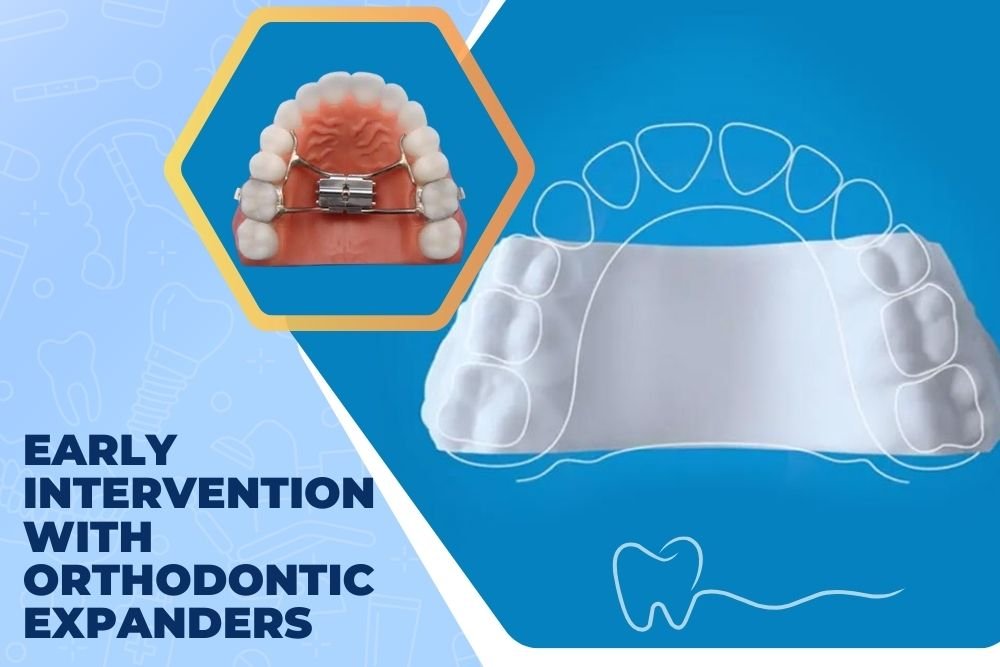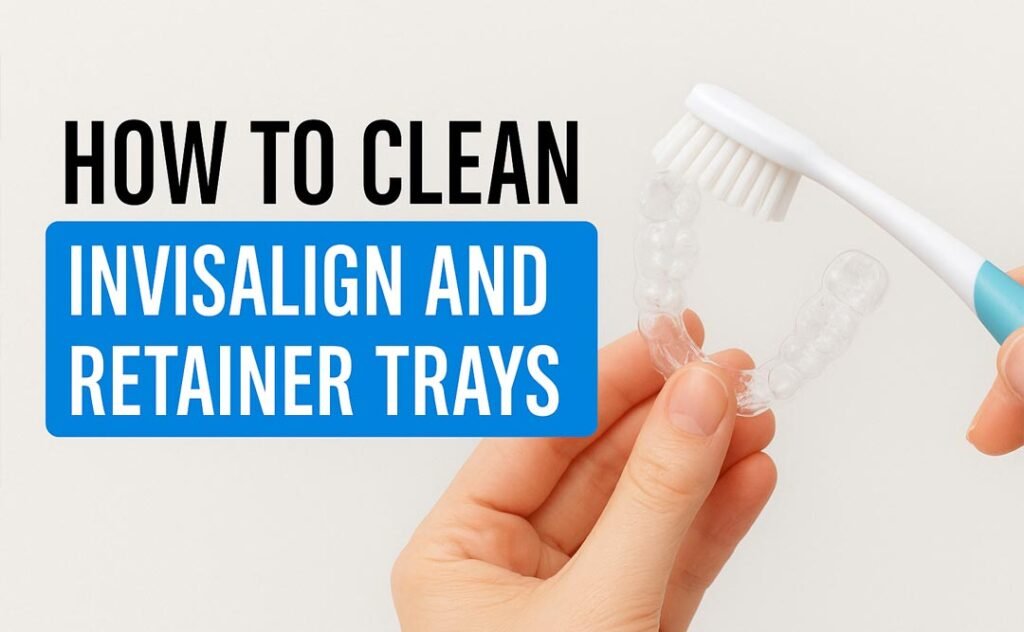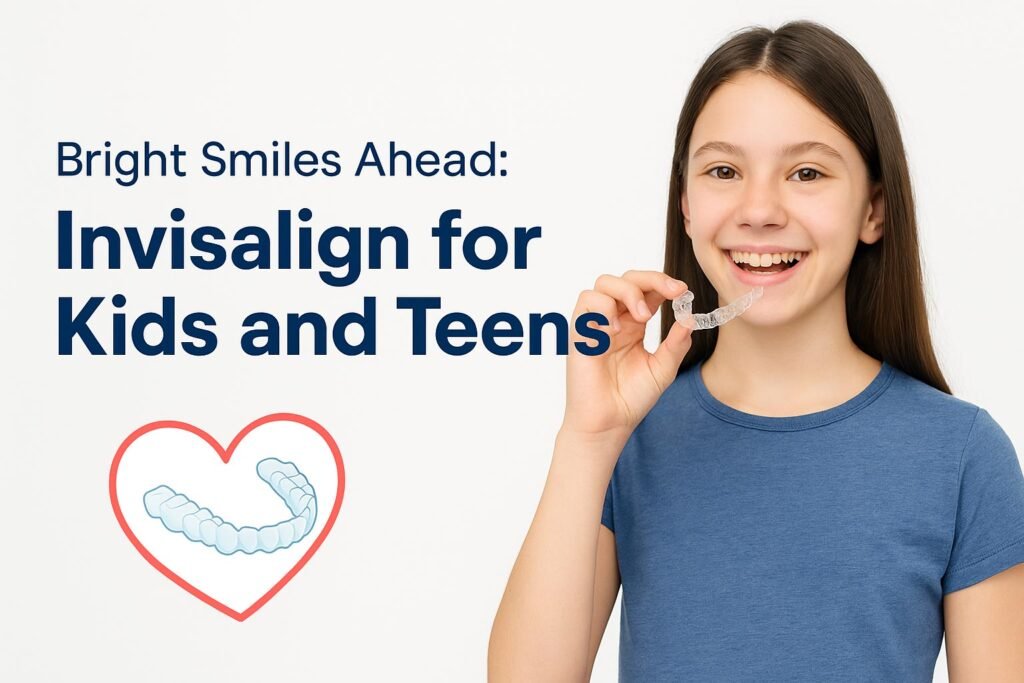Orthodontics has come a long way in improving oral health, and one of the most impactful tools in early treatment is the orthodontic expander. These devices are more than just dental appliances—they play a vital role in shaping the jaw, aligning teeth, and even improving breathing. But when should they be used? Why are they necessary? And what are the benefits of starting treatment early?
In this blog, we’ll explore everything you need to know about orthodontic expanders, from their purpose and timing to their types and long-term benefits. Whether you’re a parent considering treatment for your child or an adult exploring options for yourself, this blog will shed light on why expanders can be a game-changer.
Understanding Orthodontic Expanders
`An orthodontic expander, also known as a palatal expander, is a custom-made appliance designed to widen the upper jaw. This process, called palatal expansion, helps create more space in the mouth for the tongue to house in , corrects jaw alignment, and resolves issues like crowding or crossbites. It indeed helps in growth and development of the child with speech , correct tongue posture , increased room for breathing indeed helping in obstructive sleep apnea.
The expander works by applying gentle pressure to the upper jaw, encouraging the two halves to separate and widen gradually. Over time, the bone grows to fill the gap, leading to a broader, well-aligned jaw. While this may sound technical, the process is simple, effective, and, most importantly, non-invasive when done at the right age.
Why Are Orthodontic Expanders Needed?
Orthodontic expanders address several dental and skeletal issues that can affect both children and adults. These problems may seem minor at first, but if left untreated, they can lead to more serious complications down the road. Here’s why expanders are often necessary:
Crowding: When there isn’t enough room for teeth to erupt properly, they can become crowded or overlap. Expanders create the necessary space, reducing the need for extractions or complex orthodontic work later.
- Crossbites: A crossbite occurs when the upper teeth bite inside the lower teeth, leading to improper jaw alignment. If this jaw alignment is not corrected in time it can lead to continued uneven growth setting in asymmetries in the face. Expanders correct this by widening the upper jaw to fit properly over the lower jaw.
- Breathing Difficulties: A narrow upper jaw can restrict airflow through the nasal passages, leading to issues like mouth breathing or obstructive sleep apnea. By widening the jaw, expanders improve airway function and overall breathing.
- Jaw Development: Early intervention with expanders can guide the jaw’s natural growth, preventing asymmetry and enhancing facial balance.
When Are Expanders Used?
Orthodontic expanders are most effective during childhood, typically between the ages of 6 and 12 years. At this stage, the jawbones are still developing, making them more responsive to the gentle pressure applied by the expander.
While childhood is the ideal time for expansion, adults can also benefit from expanders in some cases. However, because the jawbones are fully developed in adults, the process may take longer or require additional procedures, such as TAD screws or surgical assistance.
The Benefits of Early Intervention
Early treatment with orthodontic expanders offers several advantages that go beyond dental alignment. Here’s why starting early can make a significant difference:
- Simplified Treatment: Addressing issues like crowding or crossbites early can make future orthodontic treatments, such as braces, shorter and more straightforward.
- Improved Airway Health: By widening the upper jaw, expanders can enhance nasal airflow, reducing the risk of sleep-disordered breathing or chronic mouth breathing.
- Prevention of Complications: Early intervention prevents minor issues from escalating into major problems, saving time, money, and discomfort later in life.
- Enhanced Confidence: A well-aligned jaw and teeth not only improve function but also boost self-esteem and overall quality of life.
What’s the Right Age for Treatment?
The best age for using orthodontic expanders is when the jaw is still growing. This is typically during the early mixed dentition phase, where a child has a combination of baby and permanent teeth. For most children, this falls between the ages of 6 and 12.
During this time, the two halves of the upper jaw haven’t fully fused, allowing the expander to work effectively. Starting treatment during this window ensures the best outcomes with the least amount of effort.
Types of Orthodontic Expanders
Orthodontic expanders come in different designs, each tailored to specific needs and preferences. Here’s an overview of the most common types:
- Traditional Hyrax Banded Expander
This is the most widely used type of expander, featuring metal bands attached to the back teeth. A central screw is turned periodically to apply pressure and achieve gradual expansion. It’s reliable, durable, and effective for moderate to severe cases. - 3D-Printed 4-Arm Hyrax Expander
This modern version of the traditional expander is lighter and more precise, thanks to its 3D-printed design. The four-arm structure provides additional stability and comfort for patients. More ideal for children who do not have their permanent molars in or are unable to tolerate bands. - 3D-Printed 2-Arm Expander
For milder cases or younger patients, this streamlined option offers effective results with less bulk. It’s ideal for children who need minimal correction. - Invisalign Expander
The Invisalign expander is a cutting-edge option for those who prefer a removable appliance for this treatment. Using clear aligners, this system gently widens the upper jaw without the metal components of traditional expanders. It’s a popular choice for teens and adults looking for a less noticeable solution. - Apart from these there are bonded haas expanders, slow W arch expanders, and there are also expanders that fit on the lower arch in cases when lower crowding is a lot or lower jaw is underdeveloped transversally.
What to Expect During Treatment
The process of using an orthodontic expander is straightforward and well-tolerated by most patients. Here’s what you can expect:
- Placement: The expander is custom-made and cemented onto the back molars.
- Activation: A small key is used to turn the screw in the expander daily for creating gradual pressure.
- Adjustment Period: It may take a few days to get used to the appliance. Some patients experience mild pressure or speech changes, but these usually subside quickly.
- Retention Phase: Once the desired expansion is achieved, the expander stays in place for a few months to stabilize the jaw in its new position.
Caring for Your Expander
Maintaining good oral hygiene is essential during treatment. Patients should brush around the expander and avoid sticky or hard foods that could damage the appliance. If oral hygiene is poor the arms can get embedded by gums becoming swollen and puffy from inflammation. Maintaining good oral hygiene and keeping the area clean is very important. Regular orthodontic check-ups ensure the treatment is progressing smoothly.
A Path to Healthier Smiles
Orthodontic expanders are a small device with a big impact. By addressing issues early, they set the stage for healthier teeth, improved breathing, and better overall well-being. Whether you’re exploring treatment for your child or considering options for yourself, expanders offer a proven solution for creating lasting changes.
At Art of Smile Philadelphia, we’re committed to helping our patients achieve their best smiles through customized care. From traditional expanders to cutting-edge 3D-printed designs, we offer a range of options to meet every need.
Take the first step toward a brighter future—schedule a consultation today and let us guide you on the journey to better oral health.



